Can't make it to Europe? No problem. Travel expert Rick Steves still has plenty of love for these popular U.S. cities that offer so much to visitors.
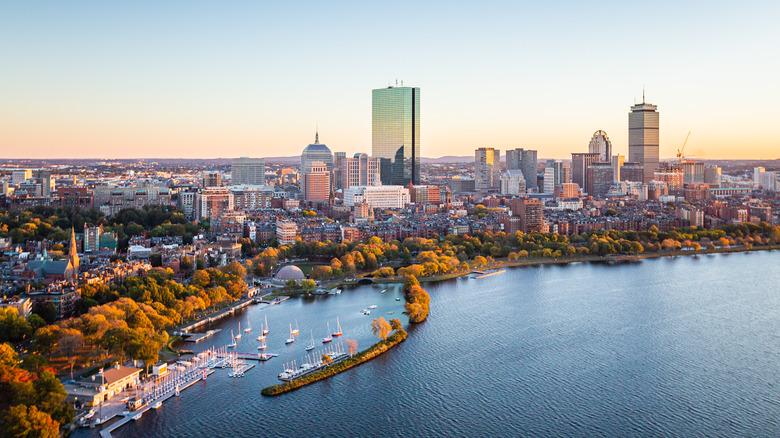



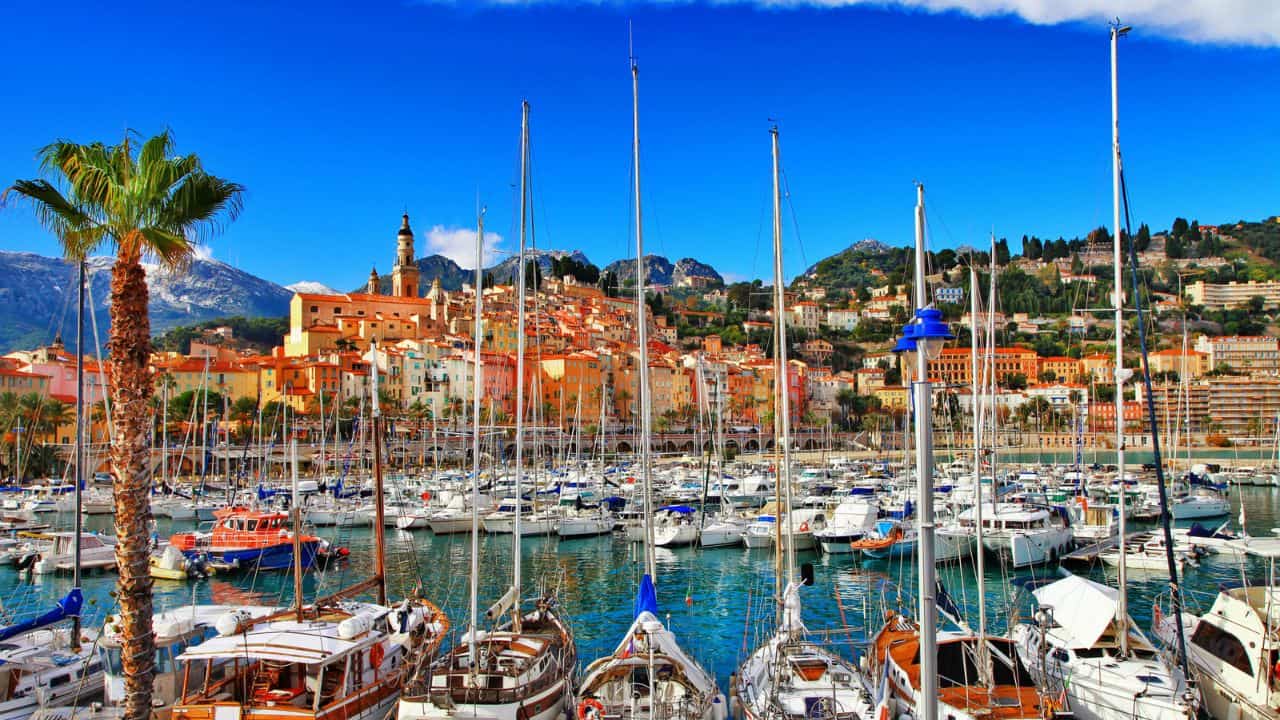 Idyllic, glitzy, full of charm, and blessed with glorious weather, the South of France is one of Europe’s most popular travel destinations.
Idyllic, glitzy, full of charm, and blessed with glorious weather, the South of France is one of Europe’s most popular travel destinations.Out of Town Blog
Mongolia Travel Guide: EVERYTHING to know before you go
Mongolia, a country of vast landscapes and rich history, offers a unique travel experience that few destinations can match. From the sprawling Gobi Desert to the nomadic culture, there’s no shortage of experiences waiting for visitors. Discover some of the most intriguing Mongolia tourist attractions, such as its ancient historical landmarks and vibrant cultural spots.

Whether you are an adventure seeker or a history enthusiast, Mongolia has something for everyone. The Gobi Desert is a must-see, offering breathtaking scenery and the chance to encounter unique wildlife. Meanwhile, Ulaanbaatar, the capital city, combines traditional culture with modern amenities, making it a perfect starting point for your travel.
For those planning to visit Mongolia, it’s essential to know the best times of year to go, how to stay connected with a local SIM card, and where to find important services like immigration registration. This Ultimate Mongolia Travel Guide provides comprehensive information to ensure your trip is as smooth as possible. Make the most of your journey by exploring Mongolia’s diverse landscapes and engaging with its deep-rooted traditions.
Mongolia, a country known for its expansive steppes, is steeped in a rich history and boasts a vibrant, diverse culture. Its unique landscape, nomadic traditions, and varying climate provide travelers with an unforgettable and multifaceted experience.
Mongolia is located in East Asia, bordered by Russia to the north and China to the south. It is one of the largest landlocked countries in the world. The terrain is diverse, featuring expansive steppes, the Gobi Desert, and rugged mountains. Mongolia’s landscape is dominated by the vast Mongolian Plateau, which is characterized by rolling plains and high-altitude deserts.
Key geographic features include:
Mongolia experiences a harsh continental climate. Winters are extremely cold, with temperatures dropping to -40°C (-40°F) in some regions. Summers are short but can be quite warm, especially in the Gobi Desert.


Mongolia’s culture is deeply rooted in its nomadic lifestyle and Buddhist traditions. Over half of the population lives a nomadic or semi-nomadic lifestyle, moving with their livestock in search of grazing land. This nomadic culture extends to major events and customs, making it a key part of Mongolia’s identity.
These unique aspects provide travelers with a deep appreciation of Mongolia’s rich cultural and geographic diversity.
Traveling to Mongolia requires some preparation to ensure you have a smooth and enjoyable experience. Key considerations include visa and entry requirements, accommodation options, and essential travel tips.
Mongolia has specific visa and entry requirements that visitors must adhere to. Citizens of certain countries, including the United States, can enter Mongolia without a visa for stays up to 90 days. However, citizens from other countries may need to apply for a visa before traveling.
It’s important to check with the Mongolian embassy or consulate in your home country for the latest information. Also, ensure your passport is valid for at least six months beyond your planned departure date.
Travel insurance is highly recommended to cover medical emergencies, trip cancellations, and other unforeseen events.

Mongolia offers a range of accommodation options, from modern hotels in Ulaanbaatar to traditional gers (yurts) in the countryside. In Ulaanbaatar, you can find international hotel chains, budget hostels, and mid-range hotels. It’s advisable to book your accommodation in advance, especially during the peak tourist season, which runs from June to September.
Staying in a ger offers a unique cultural experience and is often the preferred option for those exploring the countryside. Gers can be found in camps operated by tour companies, and they provide basic amenities, including beds, stoves, and communal bathrooms. They are a great way to experience the nomadic lifestyle.
Having a well-thought-out itinerary will help you make the most of your trip. Mongolia’s weather can be unpredictable, so packing layered clothing and sturdy footwear is essential. Always carry a reusable water bottle to stay hydrated, as tap water is not safe to drink. Bottled water is widely available for purchase.
Credit cards are accepted in major hotels and businesses in Ulaanbaatar, but cash is preferred in rural areas. It’s a good idea to carry some local currency, the Mongolian Tugrik. A portable charger and adapter for electrical outlets can also be very useful, especially if you plan to stay in remote areas.
Communication can be a challenge, so consider purchasing a local SIM card for better connectivity. Lastly, always be respectful of local customs and traditions to ensure a harmonious and enriching travel experience.
Mongolia’s landscape is a breathtaking tapestry of diversity, encompassing expansive deserts and vibrant, bustling cities. Every region beckons with its own distinct scenery and attractions, promising to enthrall any wanderer.

The Gobi Desert in Southern Mongolia is a destination for those who love the outdoors. This arid region is known for its stunning landscapes, including sand dunes like the Khongoryn Els. Visitors can explore the famous Flaming Cliffs, where dinosaur fossils have been discovered.
Hidden valleys and diverse wildlife make the Gobi a fascinating place. Camel riding is a popular activity here, offering a unique way to experience the desert. Despite harsh conditions, the Gobi is full of surprises and natural beauty.

Ulaanbaatar, Mongolia’s capital, is a mix of modernity and tradition. This bustling city is the starting point for many travelers and offers various tourist attractions. Significant sites include Sukhbaatar Square, the heart of the city, and the Gandan Monastery, the largest Buddhist monastery in Mongolia.
Ulaanbaatar also boasts museums, such as the National Museum of Mongolia, which provides insights into the country’s history and culture. Numerous restaurants and shops make it a convenient and exciting stop for anyone visiting Mongolia.

The Altai Mountains in Western Mongolia are known for their majestic scenery and rich culture. This region offers stunning landscapes that blend snow-capped peaks with lush valleys. Travelers can visit Tsambagarav National Park, home to glaciers and rare wildlife.
The area is also famous for its eagle hunters, who have practiced their ancient tradition for generations. Cultural festivals and homestays with local families provide immersive experiences. The Altai Mountains are perfect for those seeking adventure and cultural insights.

Lake Khuvsgul, situated in Northern Mongolia, is often referred to as the “Blue Pearl of Mongolia.” This pristine lake is surrounded by forests and mountains, offering a tranquil retreat for nature lovers. Boating and fishing are popular activities on the lake.
Nearby, visitors can explore the Tsaatan people, known for their reindeer herding. This region’s diverse landscapes include taiga forests and open meadows. Hiking and horseback riding are excellent ways to experience the natural beauty of Northern Mongolia.
Mongolia offers vibrant cultural festivals that showcase the country’s rich traditions and customs. These events allow visitors to immerse themselves in the nomadic lifestyle, enjoy traditional sports, and participate in unique celebrations.

Naadam Festival is the most celebrated event in Mongolia. Held annually in July, it features the “Three Manly Games”: wrestling, horse racing, and archery. This festival dates back several centuries and stands as a symbol of national pride.
Wrestling is a major highlight, with over 500 participants competing. The matches are intense and reflect Mongolian strength and honor.
Horse racing involves long-distance races, where children often ride. Horses hold a special place in Mongolian culture, and the races are a testament to their endurance and speed.
Archery showcases the traditional skills of Mongolian warriors. Both men and women participate, demonstrating precision and expertise with traditional Mongolian bows.

The Golden Eagle Festival, held in Ölgii, celebrates the bond between Kazakh hunters and their trained eagles. This event takes place in October and involves hunting competitions, where eagles catch prey on command. The festival also features traditional Kazakh music, dancing, and horse games.
Other unique festivals include the Khovsgol Ice Festival in March, where participants engage in ice skating, horse sledding, and ice sculptures on the frozen Lake Khövsgöl. The Gongoriin Bombani Hural is a spiritual event that showcases Mongolian Buddhist rituals and chanting ceremonies.
Tsagaan Sar, the Mongolian Lunar New Year, is a key celebration marking the end of winter and the beginning of spring. Families gather to honor ancestors and share traditional foods like buuz (steamed dumplings). The festival is rich in customs, such as the exchange of snuff bottles and traditional greetings.
Nomadic culture is at the heart of many celebrations, reflecting the lifestyle of moving with the seasons. Festivals often include horse parades, traditional music, and dance performances that provide a window into the nomadic way of life.
Mongolia’s cultural festivals offer a unique opportunity to experience their rich heritage firsthand.
Mongolia offers a wide range of outdoor activities that attract adventure seekers and nature lovers. From trekking through its vast countryside to exploring the unique landscapes of the Gobi Desert, Mongolia promises unforgettable experiences.

Mongolia’s countryside is a trekker’s paradise with its endless landscapes and untouched nature. One popular spot is the Altai Mountains, where travelers can hike through stunning valleys and snow-capped peaks. The Khangai Mountains also offer excellent routes for exploring forested hills and clear rivers. For those seeking a more relaxed experience, the Orkhon Valley provides scenic trails perfect for both walking and horseback riding.
The Tsenkher Hot Spring, located in central Mongolia, is another highlight. Visitors can relax in outdoor pools with beautiful views of forested hills. These hot springs are open year-round and provide a perfect respite after a day of trekking.

The Gobi Desert offers unique adventures that draw visitors from around the world. This vast desert is known for its dramatic landscapes, including the Flaming Cliffs, famous for dinosaur fossils. Visitors can try camel riding across the desert dunes, providing a memorable way to experience this remarkable environment.
One of the most famous activities in the Gobi Desert is exploring the Khongoryn Els, the largest sand dunes in Mongolia. Travelers can climb the dunes for breathtaking views and enjoy the serene atmosphere. The Gobi Gurvansaikhan National Park is home to diverse wildlife like the elusive snow leopard and wild camels, making it a must-visit for wildlife enthusiasts.
Mongolia’s rich equestrian culture offers plenty of animal-based activities. Horseback riding is a traditional way to explore the countryside, with many tours offering multi-day trips across the steppes. Visitors can experience the nomadic lifestyle firsthand while riding Mongolian horses, known for their endurance.
The Eagle Festival is another unique event where visitors can watch golden eagles demonstrate impressive hunting skills. This festival, held in the Bayan-Ölgii Province, showcases the close bond between the Kazakh people and their trained eagles.
Camel riding is also popular, especially in the Gobi Desert, where visitors can traverse the sands on these majestic animals. Whether exploring vast deserts or lush valleys, these activities offer deep insights into Mongolia’s natural beauty and cultural heritage.
Traveling to Mongolia requires careful planning, from choosing the right itinerary to ensuring your safety. This guide covers helpful tips for different travel styles, transportation options, and health and safety considerations.
Mongolia offers unique experiences for solo travelers, families, and adventure seekers. Solo travelers might enjoy a 2-week itinerary that includes Ulaanbaatar, the Gobi Desert, and Khuvsgul Lake. Families can opt for shorter itineraries, focusing on highlights like the Naadam Festival during summer.
For adventure seekers, a 9-day itinerary provides opportunities to experience nomadic traditions and stunning landscapes.
Traveling within Mongolia can be challenging, but there are several options. Domestic flights are convenient for long distances, while a well-maintained network of roads and trails supports car rentals and bus travel. Taxis and car rentals in Ulaanbaatar are useful for city travel.
Tour operators can provide guided tours, offering convenience and local knowledge for those unfamiliar with the area.
Ensuring your safety and health during your trip to Mongolia is crucial. Be aware of extreme weather conditions, like summer heat or winter cold. It’s important to get travel insurance to cover potential medical issues and delays.
Be cautious with food and water, sticking to bottled water and well-cooked meals to prevent illness. Additionally, it’s wise to have a basic knowledge of local emergency services and contact information for your embassy.
Travelers to Mongolia find it crucial to pack wisely, respect local traditions, and connect deeply with the local people. From proper clothing to understanding nomadic lifestyles, these tips can enhance your journey.
Packing for Mongolia requires special attention due to its varied climate and remote attractions. Travelers should bring layered clothing to adapt to temperature changes. In summer months like June, July, and August, it is still important to have a warm jacket for cold nights in the Gobi Desert.
A good pair of sturdy hiking boots is essential for exploring rugged terrains. A high SPF sunscreen protects from strong sun at higher elevations, while insect repellent is needed, especially near water bodies. A basic first aid kit is also a must due to limited medical facilities in remote areas.
Respect for local customs is vital when interacting with Mongolian nomadic families and herders. It is polite to remove shoes when entering a ger (traditional tent). Always accept food or drink with your right hand or both hands, as using just the left hand is considered impolite.
Understanding and respecting Mongolian traditions fosters good relationships with the locals. Refrain from speaking loudly or making extensive gestures, as this is seen as disrespectful. Demonstrating patience and compassion while navigating these customs will endear you to the local people and show your respect for their way of life.
Building connections with Mongolians can deeply enrich your travel experience. Learning a few basic Mongolian phrases shows respect and can help break the ice with nomads and herders. Travelers can stay with nomadic families to truly understand their lifestyle.
Engaging with local travel blogs and travel tips can provide insights that will help in planning activities and understanding social cues. Participating in social events and festivals during your visit also offers a unique opportunity to connect with local people. This approach not only promotes a more immersive experience but also creates lasting memories and friendships.

Mongolia offers a wealth of incredible destinations that are a must-visit for any traveler. The Gobi Desert, with its vast dunes and unique wildlife, is a highlight for many visitors. Gorkhi-Terelj National Park, known for its stunning landscapes and rock formations, is another top attraction. Lake Khövsgöl, often called the “Blue Pearl of Mongolia,” provides breathtaking views and serene nature. The historic city of Karakorum, the ancient capital of the Mongol Empire, and the nearby Erdene Zuu Monastery offer a glimpse into Mongolia’s rich history. For those interested in cultural experiences, the Eagle Festival in the Altai Mountains showcases traditional Kazakh hunting practices.
The best season to plan a trip to Mongolia is during the summer months, from June to August, when the landscapes are lush and green, and temperatures are warm, ranging from 18°C to 28°C (?. This period is ideal for outdoor activities, including trekking, horseback riding, and experiencing the Naadam Festival in July, which is Mongolia’s largest and most vibrant cultural event. Additionally, the weather is generally stable, making it a comfortable time for travel and exploration.
Ulaanbaatar, the capital city of Mongolia, is the most frequented by tourists. As the country’s primary gateway, it serves as the starting point for most travelers exploring Mongolia. Ulaanbaatar is rich in cultural attractions, including the Gandan Monastery, the National Museum of Mongolia, and the Chinggis Khaan Square. The city also offers a range of accommodations, dining options, and modern amenities, making it a convenient and attractive destination for visitors. Additionally, Ulaanbaatar’s vibrant mix of traditional and contemporary lifestyles provides a unique insight into Mongolian culture and urban life.
Mongolia is home to several notable historical sites that draw visitors from around the world. The ancient city of Karakorum, once the capital of the Mongol Empire, is a significant historical site, featuring the Erdene Zuu Monastery, which is the oldest Buddhist monastery in Mongolia. The Orkhon Valley, a UNESCO World Heritage Site, is another key location, rich with archaeological remains from various nomadic empires. Additionally, the Genghis Khan Statue Complex, located near Ulaanbaatar, commemorates Mongolia’s most famous historical figure and offers insights into his legacy. Other significant sites include the Amarbayasgalant Monastery, known for its stunning architecture, and the petroglyphic complexes of the Mongolian Altai, which provide a glimpse into ancient rock art and early human settlements.
Visitors to Ulaanbaatar can explore a variety of unique attractions that showcase the rich cultural and historical tapestry of Mongolia. The Gandan Khiid Monastery, one of the city’s most important religious sites, offers a glimpse into the country’s Buddhist traditions. The Chinggis Khaan Square, the central square named after the legendary Genghis Khan, is a focal point for cultural events and historical monuments. The National Museum of Mongolia provides comprehensive exhibits on Mongolia’s history from prehistoric times to the present. Additionally, the Zaisan Memorial offers panoramic views of the city and commemorates Soviet soldiers who died in World War II. For a more unusual experience, the Winter Palace of the Bogd Khan, the residence of Mongolia’s last king, features an eclectic mix of traditional Mongolian and European architecture.
The Chinggis Khaan Statue Complex is a significant landmark in Mongolia, symbolizing the enduring legacy and immense historical impact of Genghis Khan, the founder of the Mongol Empire. Located in Tsonjin Boldog, approximately 50 kilometers from Ulaanbaatar, the complex features a towering 40-meter equestrian statue of Genghis Khan, which is the largest of its kind in the world. The site is believed to be where Genghis Khan found a golden whip, a symbol of good fortune in Mongolian culture. The statue faces east towards his birthplace, further cementing its cultural and historical significance. The complex also includes a visitor center with exhibits on Genghis Khan’s life and the Mongol Empire, making it a vital educational resource and a major tourist attraction.
Like, Follow, and Subscribe to OutofTownBlog.com on Facebook, Twitter, Instagram, Pinterest, and Team out Of Town on YouTube for more Mongolia Tourist Spots.
Read:
Mongolia Travel Guide: EVERYTHING to know before you go
Melo Villareal
Out of Town Blog

Out of Town Blog
Kelana Beach Pub: A World of Flavors in Boracay
Are you looking for a worldy culinary experience in Boracay? Kelana Beach Pub, a restaurant that has recently opened its doors along the famous four-kilometer beach of Boracay, doles out an enticing menu of popular traditional dishes, both local and international.

It is at this breezy beachfront restaurant in Station 2 where you can pleasurably discern the country’s regional gastronomy, as well as a handful of distinct flavors hailing from culinary traditions around the world, while being serenaded by some of the island’s talented musicians with the breathtaking sea in your midst.

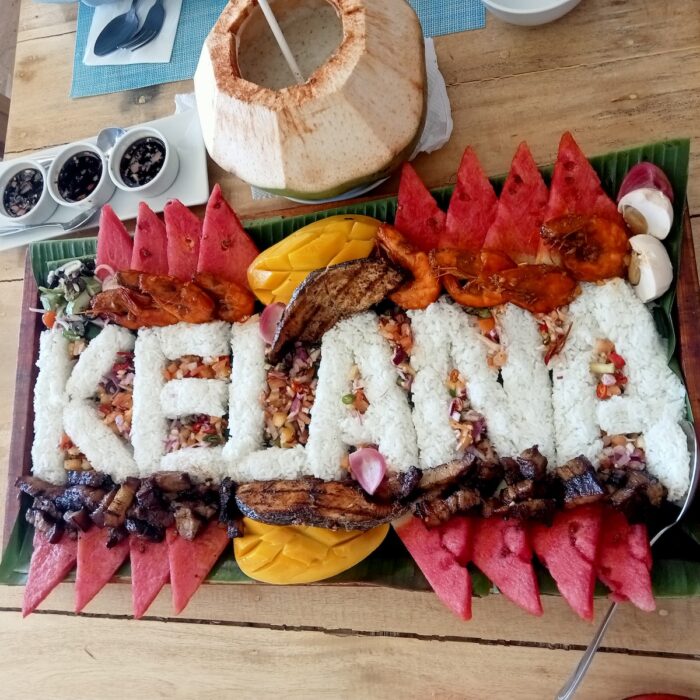
Kelana’s menu, orchestrated by Resident Executive Chef Jian Sacdalan, presents a wide range of local and foreign dishes that will surely satisfy everyone’s palate.

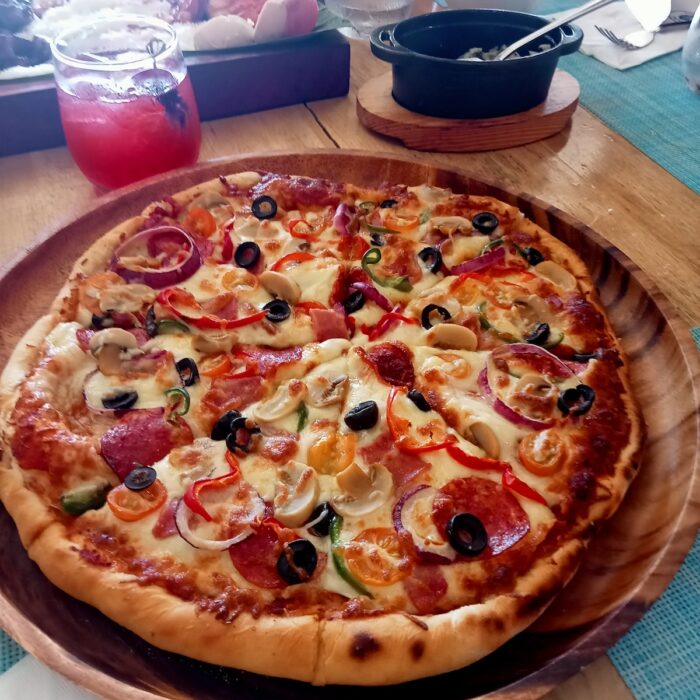
Their international dishes include baked Spinach and Artichoke Dip, a Mediterranean appetizer that is sure to melt in your mouth when dipped with toasted bread; Mediterranean Salad, a hearty dish tossed with tomato, cucumber, olives, bell pepper and feta; Mie Goreng, a sweet, sour and salty serving of shrimp, fried egg, squid and vegetables on a bed of noodles, stir-fried according to Indonesian traditions; wood-fired Italian Pizza, served with toppings like Margarita, Pepperoni, Hawaiian, Mediterranean and Cheese; as well as local favorites like Sinigang na Tanigue and a Boodle Fight Bundle of mixed meat and seafood grill, diced tomato, cucumber and onion, Pancit Bihon, plus seasoned tropical fruits on banana leaves.



You must also know that Kelana offers a line of mouthwatering desserts, such as Mango Cheese Cake, Ube Panna Cotta, Chocolate Lava Cake and Halo-Halo, which are perfect for sharing,
And if you like drinking alcohol with your meal or just want to relax for some cocktails and pika-pika over at sunset, then you will be glad to know that Kelana offers a Happy Hour Promo of Buy-One, Take-One on local beers, Sangria and all-time favorite cocktails everyday from 4-7pm.



With Kelana’s spacious interior, a maximum of 250 guests can comfortably dine in, making this beachfront restaurant a potential venue for private events.
So if you and your group crave for local and foreign flavors, then head on to Kelana Beach Pub where the choices are vast and the sea is splendid.

Kelana Beach Pub is at Station 2, White Beach, Barangay Balabag, Boracay Island. Contact them at +63 917 541 9504 for reservations.
Like, Follow, and Subscribe to OutofTownBlog.com on Facebook, Twitter, Instagram, Pinterest, and Team out Of Town on YouTube for more Boracay Tourist Spots.
Read: Top 25 BORACAY TOURIST SPOTS + Things to Do & Places to Visit
Kelana Beach Pub: A World of Flavors in Boracay
Amanda Virrey
Out of Town Blog

My exploits as a teenager were modest to some degree. Yet, I still managed to perform a few daring feats here and there. There was the time I jumped off my parent’s roof into the swimming pool below. No thoughts of missing the jump, just cheers as I hit perfectly in the crystal blue water below, red solo cups raised in my honor. There were nighttime swims in the ocean - a dark sea, no wet suit just the chill of the water and briny salt taste on my lips as I plunged fearlessly into the crashing waves of the Pacific.

And don’t forget skateboarding in abandoned pools attempting new tricks on my Powell Peralta leaving skin from my knees and elbows on concrete as a testament to my failed but oh-so-cool moves.

Then one day rather abruptly, I grew up. Although it may have been a gradual process, in hindsight, it seemed as if one day I was the tomboy daredevil and the next, I was a professional dressing up in suits for work, quiet dinners over wine with friends, in bed before 10. What the heck happened? Was I just getting old?
My life had become a doldrum of work, sleep, binge watching, errands, and paying bills.
Fast forward a few years. A trifecta of major life changes occurred all at once – my father’s passing, my granddaughter all grown up, and the breakup of a marriage that never should have happened in the first place.

The old Jen was awakened. I discovered how alive I felt and wanted to try all sorts of new things – there was yoga, e-biking, snowboarding, kayaking…
And of course, my favorite – canyoneering in Southern Utah.

Rock rappelling had always appealed to me, but I wasn’t sure of the equipment needed and the whole gravity thing seemed problematic. Was I strong enough to hold myself steady over a cliff? Would I end up soaring down, crashing to the ground below at the mercy of the Earth’s gravitational pull? There would be no safe swimming pool to land in if things went south. It was always easier to skip it than face the fear, but I decided to take a leap of faith and put it off no more.
Of course, anyone reading this who has rappelled before is shaking their head right about now with a big grin on their face – the kind of grin that experience gives the wiser of us.
Why? Well, let me tell you about my experience…

I was planning a trip to Zion looking for fun and interesting things to do and write about for my blog. I love finding unique things to tell my readers about. I was staying at the glamping resort Open Sky Zion and was looking at their experiences page for ideas when I came across Rock Odysseys. I called them up and spoke to Gabby Olsen (who I later learned is the owner of this female owned company).
I explained to her that two of the four of us coming had never rappelled before and were nervous. She put my mind at ease, and I became pretty excited. In fact, I could hardly contain my enthusiasm as I booked the adventure. She was so knowledgeable and sweet that my worries were laid to rest.

She picked us up where we were staying and drove us out Kolob Terrace Road to one of the most beautiful areas around with sweeping panoramic views of Southern Utah’s quintessential stunning red rock landscape.

It was perfect. She got us fitted with gear – helmets, harness, the usual and then we were off.
After a short hike, we began a steep ascent with some rock scrambling. Nothing we couldn’t handle. I was stoked. It only took about 20 minutes until we reached the first rappel site. I was still stoked.

She told us to sit down for a few minutes of instruction. The stoke lived on. Then she began to demonstrate what we would be doing. I suddenly became not so stoked. All that adrenaline pumping me full of excitement began to reverse itself and my flight or fight response chose flight.

For the first time all morning, as she dangled her little body over the edge of the cliff with nothing more than a harness and rope holding her in place, I thought, “oh no, what the heck did I get myself into?” What could have possibly made me think this would be fun? How can I gracefully bow out? Help!

I tried to keep my cool, nodding at the appropriate times during the lesson but my insides were screaming as panic set in. How could she just dangle there like that? I can’t even watch. I thought, there is no way I am strong enough to do this. I should have worked out more these past few months. I’m too weak. I just know I will go plummeting down and crash land below. Goodbye friends, goodbye family. It was great knowing you.

I was third in line and when my turn came up, I smiled with a false façade of fearlessness. She told me to start walking backward down the side of the sheer cliff wall. Every ounce of me was screaming, “don’t do it.” But, my legs betrayed me (those little bastards) and I began to move as instructed taking one nervous step back after another knowing I was soon about to die!!
Wait, what is happening? What is going on. It can’t be …. this is SO easy.

It's funny because even though I quickly came to realize what many don’t actually know – rappelling relies on physics with the rope doing the work - I was completely out of breath by the time I finished my descent. In fact, I think I actually held my breath the entire way down taking in no air as fear paralyzed my lungs. Looking back, it makes me laugh. I mean from that moment on, I was hooked. The steeper, the better. The longer the drop, the more fun to be had. It was incredible. I didn’t want it to end.

So, the lesson to be shared… rappelling is way easier than you would think. There is absolutely nothing to it if you have the right guide. In fact, ANYONE… like literally anyone can do it. Whether you’re 3 years old or 80!

I repeat, anyone with a good guide can do it. If you pick a company to go with like Rock Odysseys in Utah, who knows what they’re doing, then you need no knowledge of the equipment, no endless nights of watching YouTube videos trying to figure it out, no worries, no stress.

In fact, I loved it so much that as soon as I got home, I started talking to Gabby about coming back next spring for another adventure!

You will be seeing me again soon Rock Odysseys!
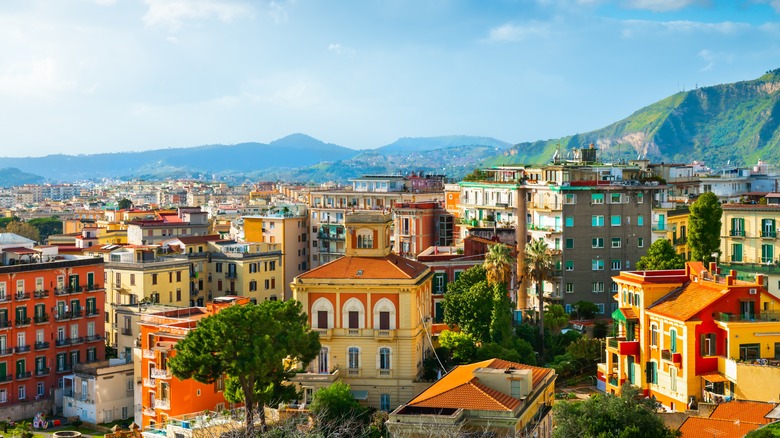
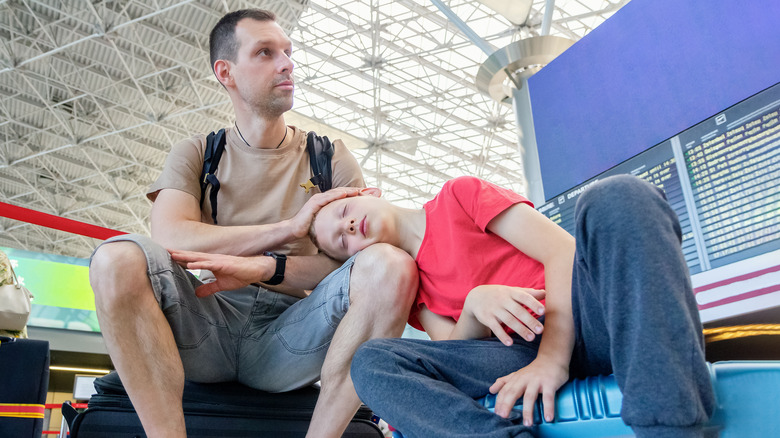
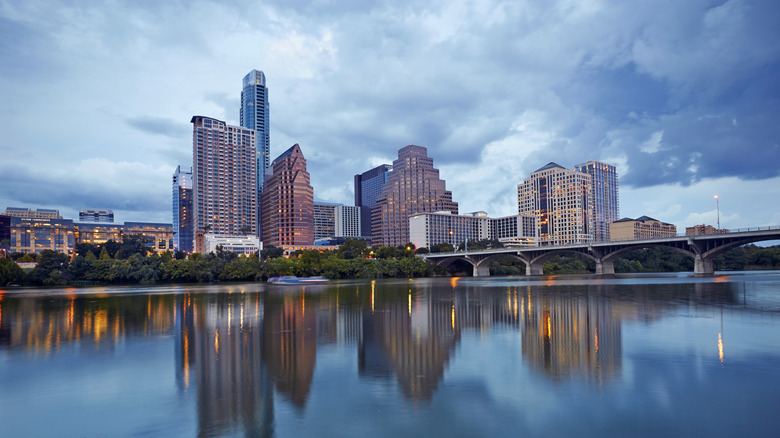
Out of Town Blog
Myanmar Travel Guide: Travel Tips + Itinerary
Myanmar, located in Southeast Asia, offers a unique blend of rich culture, stunning landscapes, and historical sites. Travelers will be captivated by attractions such as the golden Shwedagon Pagoda, a sacred site with a serene atmosphere and a jewel-encrusted dome. Thousands of Buddhist temples across the country also draw visitors seeking spiritual and architectural wonders.

In addition to its religious landmarks, Myanmar boasts incredible natural beauty. The Inle Lake region, with its floating villages and lush surroundings, offers a glimpse into local life. Myanmar’s coastlines, like Ngapali Beach, provide pristine sands and crystal-clear waters, perfect for relaxation.
Exploring ancient cities like Bagan, with its countless pagodas, takes visitors on a journey back in time. For those interested in trekking, the regions around Kalaw and Hsipaw offer breathtaking routes. Whether you’re drawn to Myanmar’s cultural heritage or its natural landscapes, this country promises an unforgettable travel experience.
Planning a visit to Myanmar involves considering the best time to go, understanding visa requirements, figuring out travel logistics, and being aware of cultural etiquette. Following these steps ensures a smooth and enjoyable trip.
Myanmar’s climate varies with three main seasons: the hot season (March to May), the rainy season (June to September), and the cool season (October to February). The cool season is the best time for travel, with pleasant temperatures and minimal rain. During this period, attractions like the temples of Bagan and the beaches of Ngapali are at their most accessible.
Avoid the rainy season, as heavy rains can disrupt travel plans and make roads impassable. Overall, plan your itinerary around the cool season to enjoy the best experiences Myanmar has to offer.
Visitors to Myanmar generally need a visa. Citizens from most countries can apply for an eVisa online, which is valid for 28 days and allows entry through international airports and specific land border checkpoints.
Ensure your passport is valid for at least six months from your date of entry. Double-check the specifics of the Myanmar visa application process on the official government website or through a trusted travel agency.
Flights are the most common way to enter Myanmar, with major airports in Yangon, Mandalay, and Nay Pyi Taw. Airlines offer regular flights from various Asian hubs.
Within Myanmar, domestic flights save time, especially for long distances. Buses and trains are options for budget travelers, though they can be slower. Hiring a private car with a driver is recommended for more comfort and flexibility. For short distances, taxis and motorbike taxis are available.

Myanmar has rich cultural traditions. Dress modestly, especially when visiting temples and pagodas; shoulders and knees should be covered. It is customary to remove shoes before entering temples.
Interactions should be polite and respectful. Avoid touching people’s heads, even children’s, as it is considered disrespectful. When giving or receiving items, use your right hand or both hands.
Learning a few phrases in Burmese, such as “mingalaba” (hello), shows respect and can enrich your travel experience. Respect for local customs enhances your visit and contributes to a positive relationship with the locals.
Myanmar offers a diverse range of travel experiences, from bustling cities to serene beaches and ancient temples. Here are some key destinations you must visit on your trip to Myanmar.

Yangon, formerly known as Rangoon, serves as the main international gateway to Myanmar. The city is famous for its colonial architecture and vibrant street life. The iconic Shwedagon Pagoda, covered in gold, is a must-see.
Visitors will enjoy wandering through the Bogyoke Aung San Market, filled with local handicrafts and food stalls. Kandawgyi Lake offers a peaceful escape within the bustling city. Sule Pagoda, located in the heart of downtown, is another significant religious site worth visiting.

Bagan is known for its stunning array of ancient temples and pagodas, dating back to the 9th to 13th centuries. It is one of the most popular cities in Myanmar for tourists.
The Ananda Temple stands out for its impressive architecture, while the Shwesandaw Pagoda provides breathtaking views, especially at sunrise or sunset. Exploring Bagan by hot air balloon offers a unique perspective of this archaeological wonder.
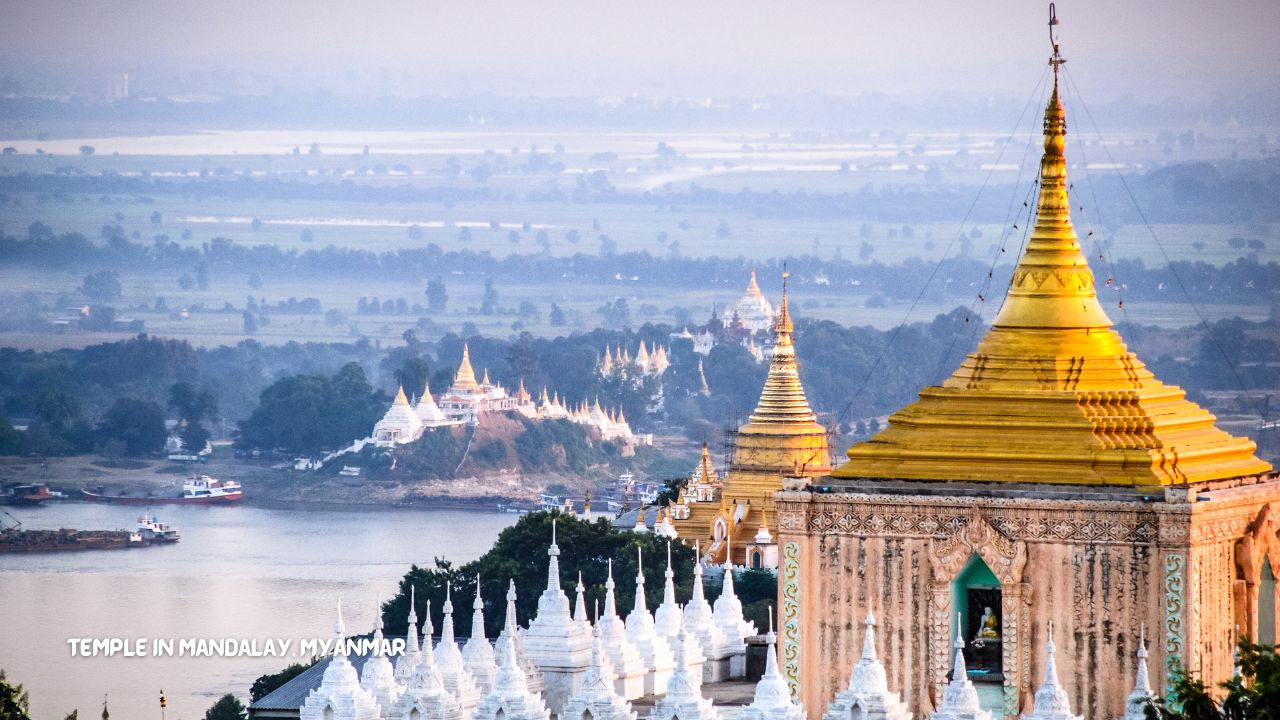
Mandalay is known as the cultural heart of Myanmar. The city is famous for its rich history, traditional arts, and crafts. Mandalay Palace, the last royal palace of the Burmese monarchy, is a significant historical site.
Mandalay Hill offers panoramic views of the city and surrounding countryside. The U Bein Bridge, the longest teakwood bridge in the world, is a popular spot for photographs and evening strolls. Mahamuni Pagoda is also a key religious site.
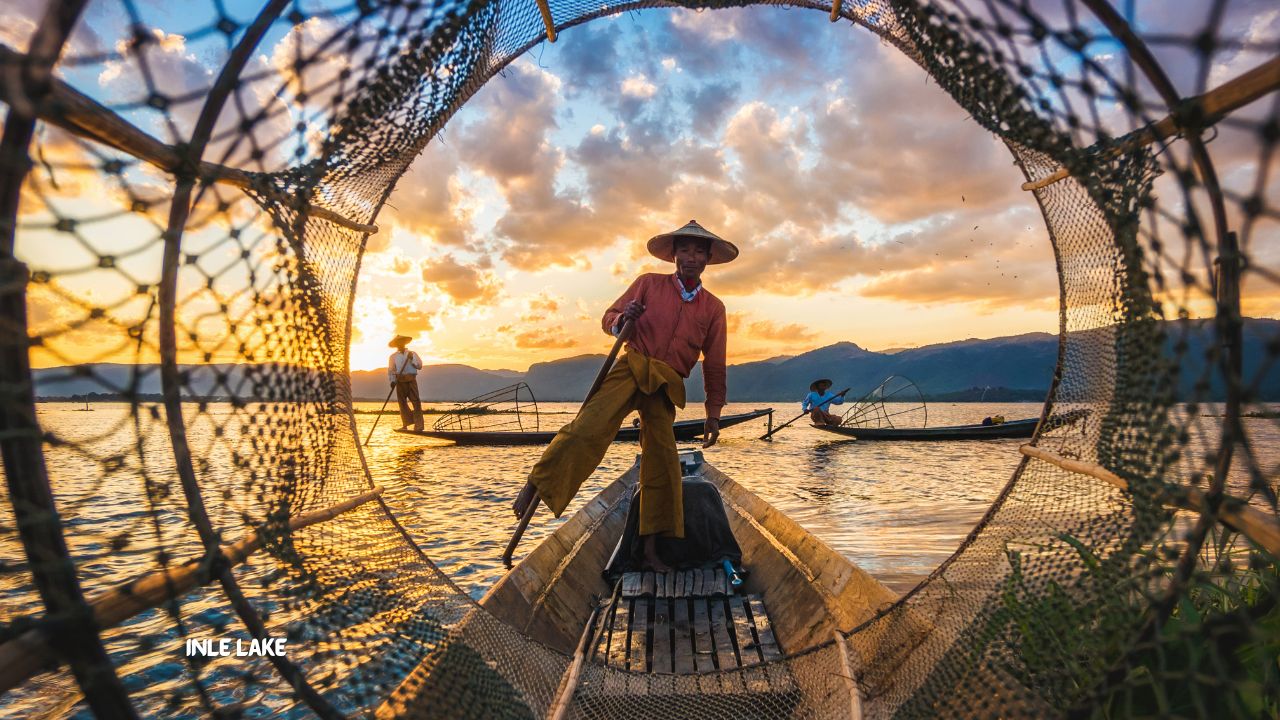
Inle Lake is located in the Shan State and offers a unique ecosystem with floating gardens and stilted villages. It is one of the top attractions in Myanmar for nature lovers.
Visitors can take boat tours to observe the local Intha people and their unique leg-rowing techniques. The Phaung Daw Oo Pagoda and the local markets are also worth exploring. The lake is surrounded by mountains, providing beautiful scenery.

Ngapali Beach is a tranquil escape located on the Bay of Bengal. Known for its long stretches of white sandy beaches and clear blue waters, it is a perfect spot for relaxation.
Activities include snorkeling, fishing, and enjoying fresh seafood at beachside restaurants. The nearby villages offer a glimpse into the local way of life. Ngapali is arguably one of the most serene tourist spots in Myanmar.
Myanmar is rich in history and culture, offering travelers a chance to explore ancient temples, majestic palaces, and sacred pagodas. Each site provides a unique glimpse into the country’s religious significance and architectural beauty.

The Shwedagon Pagoda in Yangon stands as Myanmar’s most iconic landmark. Its golden stupa, encrusted with diamonds and other precious stones, can be seen from miles around. Dating back over 2,500 years, the pagoda houses relics of four Buddhas, making it a site of immense religious significance for Buddhists.
Local legends and the devotion of countless pilgrims enhance its spiritual atmosphere. Visitors often participate in traditional ceremonies and offer prayers, adding to the pagoda’s vibrant cultural tapestry. The surrounding complex, filled with smaller shrines and statues, invites exploration and reflection.

The Mandalay Palace served as the last royal palace of the Burmese monarchy. Constructed in the mid-19th century, it offers insights into the kingdom’s final days before the British colonial era. The well-preserved structures and exhibits within the palace grounds provide a rich history of Burma’s royal heritage.
Nearby, Mandalay Hill offers panoramic views of the city and the Irrawaddy River. The hill is dotted with pagodas and monasteries, attracting both pilgrims and tourists. The climb to the top, often made barefoot in traditional style, is rewarded with breathtaking sunsets and a sense of spiritual serenity.

Bagan, once the capital of the First Burmese Empire, is home to thousands of ancient temples and stupas. Dating back to the 9th to 13th centuries, these religious structures display a range of architectural styles and intricate murals. Notable temples include Ananda Temple, with its stunning Buddha statues, and Shwezigon Pagoda, a prototype for Burmese stupas.
Visitors can explore the temples by foot, bicycle, or hot air balloon, offering different perspectives of the historical landscape. The sheer number of temples, around 2,000 still standing, creates an awe-inspiring scene that reflects the devotion and craftsmanship of the Burmese people.

The Mahamuni Buddha Temple in Mandalay houses one of the most revered Buddha images in Myanmar. The statue, believed to be over 2,000 years old, is covered with gold leaf applied by male devotees as a sign of reverence. This ongoing tradition has significantly thickened the statue with layers of gold over the centuries.
The temple complex also includes a collection of ancient artifacts and a museum. The spiritual significance of Mahamuni Temple, along with the cultural practices observed there, make it a must-visit for those interested in Burmese Buddhism and traditions.

Kyaiktiyo Pagoda, also known as the Golden Rock, is a unique pilgrimage site located on a hilltop in Mon State. The pagoda sits atop a massive granite boulder covered in gold leaf, seemingly defying gravity as it balances precariously on the edge of a cliff. According to legend, the rock remains in place thanks to a strand of Buddha’s hair.
Pilgrims and visitors alike undertake the challenging hike up the mountain, often starting their journey in the early hours to avoid the heat. The site offers breathtaking views and a profound sense of spiritual accomplishment for those who reach the top.
In Myanmar, natural beauty abounds from mystical mountains to serene lakes. Adventurous trekkers will find plenty of opportunities to explore this diverse landscape.

Mount Popa, an extinct volcano, rises 1,518 meters above sea level. This majestic peak is considered the spiritual abode of the nats, or spirit beings, in Burmese culture. Pilgrims climb more than 700 steps to reach the Popa Taungkalat Monastery perched atop a volcanic plug.
Besides its cultural significance, Mount Popa offers breathtaking views of the surrounding region. The lush landscapes contain diverse flora and fauna, making it a haven for nature lovers. Adventure seekers can hike the trails that wind through these verdant surroundings, giving them a glimpse of Myanmar’s unique biodiversity.

Inle Lake, located in the Shan State, is famous for its floating gardens and stilted villages. Local Intha people live in houses raised on stilts above the water, cultivating crops on floating beds of vegetation. The lake is a hub of activity with fishermen practicing a distinctive leg-rowing technique to navigate their boats.
Visitors can take boat rides to explore the floating gardens and observe traditional ways of life. The serene water and picturesque landscapes create a tranquil atmosphere perfect for relaxation. Additionally, the lake is surrounded by rolling hills and dotted with ancient pagodas, offering numerous photo opportunities and hiking trails.

Shan State is a trekker’s paradise, offering routes that traverse through mountains, forests, and remote villages. Kalaw, a former British hill station, serves as a popular starting point for many treks. The cool climate and scenic views make it an ideal location for outdoor activities.
Trekkers can expect to pass through terraced fields, meet ethnic minority communities, and enjoy panoramic vistas of the countryside. The trails vary in difficulty, catering to both novice and experienced hikers. As they walk, adventurers can experience the rich culture and natural beauty that define this region.
Myanmar offers incredible experiences such as floating above ancient temples in a hot air balloon, tasting flavorful street foods, drifting down serene rivers, and visiting important cultural and religious landmarks.

Hot air balloon rides over Bagan provide a breathtaking view of the thousands of ancient temples and pagodas. These rides usually take place at sunrise, giving travelers a stunning, golden view of the landscape.
The calm and peaceful flight allows for a unique perspective of the historical sites below. Reviews often highlight the professional and friendly service provided by the operators. Booking a ride in advance is recommended, as spots fill up quickly during peak tourist seasons.

Culinary tours in Myanmar are a great way to explore the vibrant street food scene. Guided food tours often take visitors through bustling markets and local eateries where they can try dishes like mohinga, samosa salad, and laphet thoke.
These tours provide not only tastings but also insights into the ingredients and cooking methods. Street food tours are popular in cities like Yangon and Mandalay, where the variety and quality of food are highly praised. Using an E-Bike can be a fun and efficient way to navigate these tours.
River cruises along the Irrawaddy River offer an excellent way to see Myanmar from a different angle. These cruises can range from short day trips to longer multi-day excursions.
Notable stopping points include the city of Mandalay, the historic sites of Bagan, and the floating gardens of Inle Lake. Boat excursions also offer a chance to witness local life along the riverbanks, making it a memorable experience. Many cruises provide amenities such as meals, cultural performances, and knowledgeable guides.
Myanmar is rich in cultural and religious heritage, making it a significant destination for pilgrimages. Sites like Shwedagon Pagoda in Yangon and the temples of Bagan are some of the most visited.
The Golden Rock at Kyaiktiyo is another important pilgrimage site, where visitors often climb to witness the large rock balancing on the edge of a cliff. These tours provide deep insights into the spiritual aspects of Burmese life and are often complemented by local guides who share historical and cultural stories.
In Myanmar, visitors can find a range of accommodations from budget-friendly hostels to high-end luxury hotels. Dining options are equally diverse, featuring local Burmese cuisine alongside international menus.
Myanmar offers a variety of places to stay, appealing to different budgets and preferences.
Budget accommodations like hostels and guesthouses are commonly found in major cities like Yangon and Mandalay, costing around $10-$20 per night. These are ideal for backpackers and budget travelers.
Mid-range hotels provide more comfort and are priced between $30-$70 per night. They often include amenities such as air conditioning, Wi-Fi, and breakfast.
Luxury hotels and resorts, mostly located in tourist hotspots like Bagan and Inle Lake, offer premium services and unique experiences. Prices here can range from $100 to several hundred dollars per night. These establishments often incorporate local Burmese culture and architecture, providing a blend of comfort and tradition.
Dining in Myanmar allows travelers to savor a wide range of flavors.
Local Burmese cuisine is rich and diverse. Staples include dishes like Mohinga (a fish noodle soup) and Laphet Thoke (fermented tea leaf salad). Street food stalls are abundant and provide an inexpensive way to try various local dishes, typically costing $1-$3 per meal.
Restaurants in larger cities and tourist areas offer both local and international menus. You can find everything from Italian pasta to Japanese sushi. Prices in these establishments vary, usually ranging from $5-$20 per meal.
High-end dining is also available, especially in the larger hotels and luxury resorts. These places often offer gourmet versions of local dishes along with a variety of international cuisines, with prices starting at around $30 per meal.
Booking accommodations in Myanmar can be straightforward with a few tips.
Advance booking is recommended, especially during peak tourist season from November to February. Websites like Tripadvisor and local travel agencies offer various options and reliable reviews.
Consider location when choosing your stay. Staying in central areas or close to major attractions can save time and transportation costs.
Amenities and services should also be taken into account. Look for essential services such as Wi-Fi, breakfast, and air conditioning in the hotel descriptions. High-end hotels may offer cultural experiences, like local cooking classes or guided tours.
Remember to review cancellation policies before booking, as plans may change, and flexibility can be crucial for a stress-free trip.
Exploring the local markets in Myanmar offers a window into its rich culture and traditions. Visitors can find unique souvenirs, observe daily life, and participate in vibrant festivals.

Myanmar’s markets are bustling places where you can find a variety of items. Visitors can browse through stalls selling traditional handicrafts, textiles, and jewelry. Bogyoke Aung San Market in Yangon is particularly famous for its wide array of goods.
Handicrafts include lacquerware, wooden carvings, and hand-woven fabrics. Tourists often purchase longyi, a traditional Burmese garment. Vendors are friendly and may offer stories about the making of their products, adding a personal touch to the shopping experience.
Taking photos is encouraged, and haggling is part of the culture, making market visits both fun and engaging.

In cities like Yangon and Mandalay, daily life is a blend of modern and traditional elements. Street food tours are popular, offering a taste of local dishes like mohinga and tea leaf salad.
Public transport is varied, with buses, trishaws, and motorbikes filling the streets. In villages, life is more laid-back. Houses are often built on stilts, and agriculture is the main livelihood. Local culture thrives in these areas, with residents maintaining age-old traditions and customs.
Visitors can observe these practices and gain a deeper understanding of Myanmar’s way of life.
Myanmar is home to numerous festivals that showcase its rich cultural heritage. One of the most significant is Thingyan, the Burmese New Year water festival. During Thingyan, people splash water on each other to purify and welcome the new year. Music, dance, and traditional food are integral parts of the celebration.
Another notable event is the Shwedagon Pagoda Festival, which attracts thousands of devotees. Smaller local festivals include Taunggyi Balloon Festival where hot air balloons light up the night sky.
These events offer visitors the chance to immerse themselves in the local culture and witness community spirit in action.
Traveling to Myanmar can be a unique experience, but it’s essential to stay informed about potential risks and safety measures. This section covers key tips on health, emergency services, and responsible tourism.
Travelers should stay updated on health advisories. It’s important to get vaccinated for diseases such as hepatitis A, hepatitis B, and typhoid. In certain areas of Myanmar, malaria is a risk, so consult a healthcare provider about anti-malarial medication.
Water and food safety are crucial. Avoid drinking tap water and opt for bottled water. Street food can be tempting, but make sure it’s cooked thoroughly and served hot.
General safety is also a concern. Be cautious about potential pickpocketing in crowded areas. Avoid dark, isolated locations especially after dark. Always let someone know your travel plans and keep your belongings secure.
Obtaining travel insurance is essential before visiting Myanmar. Make sure it covers medical emergencies, trip cancellations, and theft. Check if your insurance provider includes evacuation in case of severe health situations or natural disasters.
Myanmar’s medical facilities may be limited, especially in remote areas. Major cities like Yangon and Mandalay have more reliable healthcare services. However, it’s still recommended to be prepared for emergencies. Keep a list of local emergency contacts, including the nearest embassy and medical facilities.
In an emergency, dial 199 for police, 192 for the fire department, and 191 for medical assistance. It’s also wise to have basic first aid supplies and know some emergency phrases in the local language.
Being a responsible tourist helps protect Myanmar’s rich cultural and natural heritage. Support local businesses by staying in locally-owned accommodations and eating at local restaurants. This not only boosts the economy but also provides a more authentic experience.
Sustainability is vital. Avoid using single-use plastics and participate in eco-friendly tours that have minimal environmental impact. Be mindful of wildlife and natural habitats. When visiting cultural sites, respect local customs and dress appropriately.
Promoting responsible tourism practices ensures that Myanmar remains a beautiful destination for future travelers. By being considerate and making ethical choices, tourists can positively impact the country and its people.
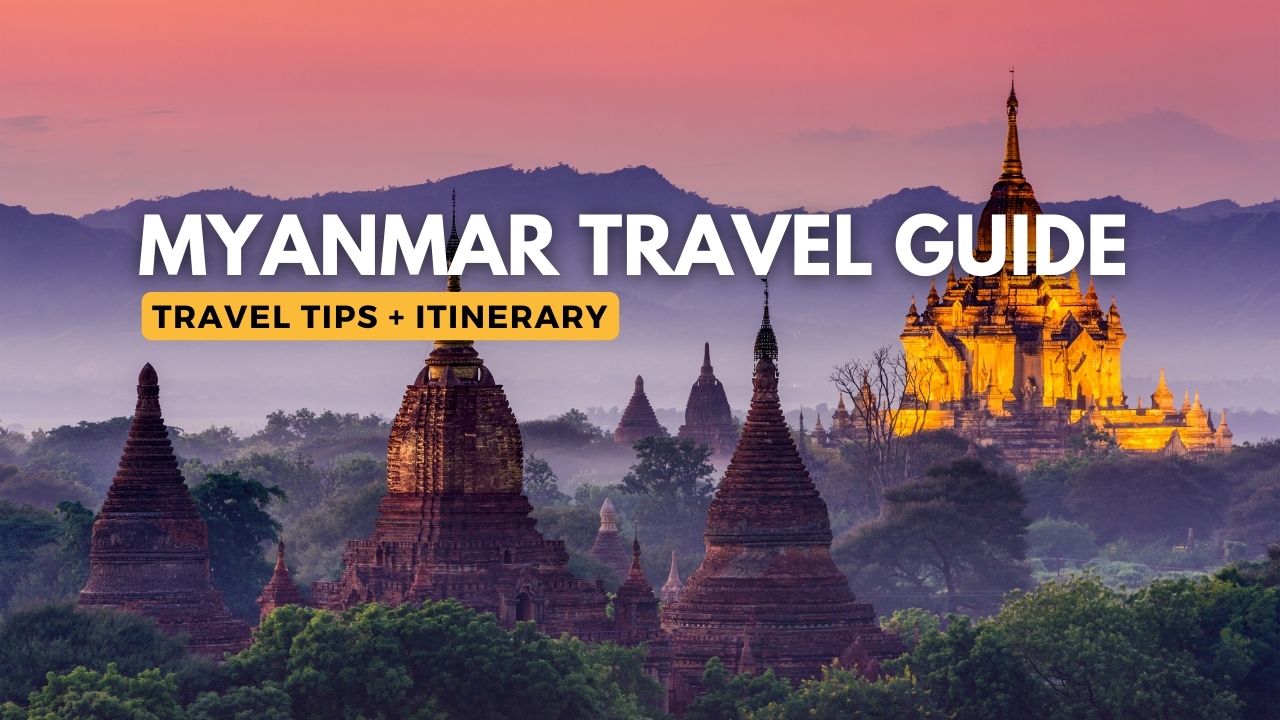
Myanmar offers a blend of cultural heritage, unique historical sites, and beautiful landscapes that attract many tourists each year. From ancient pagodas to bustling cities, there’s much to explore.
Yangon is considered the most visited city by tourists in Myanmar. It is the largest city in the country and serves as a major hub for both international and domestic travelers. Yangon is renowned for its rich cultural heritage, vibrant street life, and landmarks such as the Shwedagon Pagoda, which is one of the most sacred Buddhist sites in Myanmar.
The city’s blend of colonial architecture, bustling markets, and modern amenities makes it a popular destination for visitors looking to experience the diverse aspects of Myanmar.
Myanmar is renowned for its rich cultural and historical heritage, deeply influenced by Buddhism, which has shaped its art, architecture, and daily life for centuries. The country is famous for its stunning Buddhist temples and pagodas, with the Shwedagon Pagoda in Yangon and the ancient city of Bagan being prime examples.
Myanmar’s culture is also characterized by traditional dance, music, and festivals, which reflect the diverse ethnic groups within the country. Historically, Myanmar was home to powerful kingdoms such as the Pagan Kingdom, which left a legacy of impressive monuments and a significant influence on Southeast Asian culture.
Myanmar is a destination of choice for many tourists due to its unique blend of cultural authenticity, historical richness, and natural beauty. The country offers a rare chance to explore relatively untouched landscapes, including pristine beaches, lush forests, and scenic mountains.
Tourists are particularly drawn to the ancient city of Bagan, with its thousands of temples and pagodas, and the serene Inle Lake, known for its floating villages and gardens. Additionally, Myanmar’s warm and hospitable people, distinctive cuisine, and vibrant markets add to the overall appeal. Activities such as hot-air ballooning over Bagan and visiting the world’s oldest teak bridge, U Bein Bridge, further enhance the travel experience.
Myanmar is home to numerous notable historical sites that attract visitors from around the world. The ancient city of Bagan is perhaps the most iconic, with over 2,000 temples and pagodas spread across its plains, offering a glimpse into the grandeur of the Pagan Kingdom. In Yangon, the Shwedagon Pagoda stands as a symbol of the country’s spiritual heritage, adorned with gold and precious stones.
Mandalay, the last royal capital of Myanmar, features significant sites such as the Mandalay Palace and the Shwenandaw Monastery, known for its intricate teak carvings. Other important historical locations include the ancient cities of Inwa and Amarapura, the latter being famous for the U Bein Bridge, the world’s longest teak bridge. Additionally, the Golden Rock at Kyaiktiyo and the archaeological sites of Mrauk-U offer unique insights into Myanmar’s rich cultural and historical tapestry.
Like, Follow, and Subscribe to OutofTownBlog.com on Facebook, Twitter, Instagram, Pinterest, and Team out Of Town on YouTube for more Myanmar Tourist Spots.
Read:
Myanmar Travel Guide: Travel Tips + Itinerary
Melo Villareal
Out of Town Blog